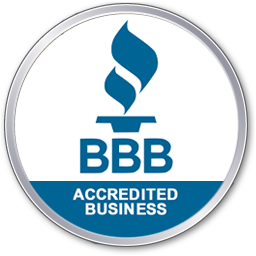You may know that asbestos is something to avoid, but do you know exactly what it is, where it’s found and how common it is to find asbestos in homes that are more than 30 years old?
More than half of U.S. homes were built prior to 1980, which is when the use of asbestos in construction materials began to phase out. This means more than half of all U.S. homes were likely built with asbestos-containing materials.
When it comes to the Portland area, roughly 26% of homes are likely to contain asbestos. If your home was built before the early 1980s, you should assume asbestos is present.
So what do you need to know as a Portland homeowner? We’ve put together this comprehensive homeowner’s guide to asbestos to help answer all your questions, including where to find asbestos in Portland homes.
What Exactly Is Asbestos?
Asbestos is a type of naturally occurring mineral found in rocks and soil. Because of its durability, asbestos has been used in many different kinds of building materials, including:
- Insulation
- Tiles
- Cement
- Roof and siding shingles
- Ceilings
- Adhesives
- Spray-on coatings
- And more
Asbestos doesn’t inherently pose a health hazard, but it can become problematic when the microscopic fibers in asbestos are released into the air. This often occurs when dust is formed during construction and renovation projects when asbestos materials are present. This dust can also form during the manufacture of asbestos-containing products.
Why Was Asbestos So Popular?
Up until the early 1980s, asbestos was one of the most frequently used materials in both residential and commercial construction products. There are multiple reasons why it was so quick to rise to fame.
- Durability: Asbestos is known for being resistant to:
- Fire
- Heat
- Corrosion
- Water
- Chemicals
These characteristics gave asbestos protective properties that could be relied on in homes and advertised by manufacturers.
- Abundance: Because asbestos is a natural mineral found in rocks and soil, it can be found in large quantities throughout the country. And because it is so available, it was also cheap, which made it even more appealing to manufacturers.
- Adaptability: Asbestos is made of millions of microscopic fibers. When pulled apart, these fibers can be adapted for use in a wide range of products. They can also be easily combined with other materials.
The use of asbestos in construction materials declined in the U.S. during the late 1970s and into the 1980s as awareness of the health hazards associated with asbestos increased. In fact, asbestos became partially banned by the U.S. Environmental Protection Agency (EPA) in 1981.
Although its use is now heavily regulated to limit exposure, asbestos is still not entirely banned in this country.
Is Asbestos Still Present in Homes?
Homes, offices and other buildings built before 2004 may still have asbestos-containing products in them unless efforts have been made to remove these materials. If materials made of asbestos become damaged, the asbestos fibers can be released into the air and breathed in.
Prolonged exposure to asbestos can be potentially harmful, and you may not realize it until many years after continued exposure.
So where do you find asbestos in homes? There are many possible places and types of materials that can contain asbestos. We’ll cover several of the top possibilities.
Where Is Asbestos Found in Homes?
Homes built prior to 2004 can have asbestos present anywhere from their basement to their rooftop. In most cases, if the products containing the asbestos are in good condition and in a place that is unlikely to be disturbed, the risk for exposure is probably minimal.
But eventually, you may want or need to repair, replace or update some of these items. That’s when the asbestos fibers can become airborne, which is why it’s so important to always test for asbestos before starting a renovation or demolition project.
If you’re concerned about where to find asbestos in your home, here are some of the most usual places.
Older Insulation
One of the most common places to find asbestos in homes is in your home’s insulation. Insulation can be found in multiple spaces around your home, including your:
- Attic
- Walls
- Ceilings
- Bathroom
- Crawl spaces
- Floors over unheated spaces, such as garages, patios and porches
Unfortunately, there’s no tell-tale way to determine whether your insulation contains asbestos without asbestos testing.
Asbestos was used in all types and brands of insulation, but the most common type of asbestos-based insulation is vermiculite. According to the EPA, more than 70% of vermiculite sold in the U.S. for more than seven decades came from a mine where asbestos was also present.
Many homes have asbestos-containing vermiculite insulation installed in the attic (and sometimes in the walls), filling in the spaces between ceiling joists. It’s a loose-fill type of insulation and can be a mix of gray, brown, silver and gold pebble-like pieces that are soft, like popcorn.
If your home has this type of insulation in the attic, it’s recommended that you leave it undisturbed – which means staying out of the attic and not using it for storage.
Other types of insulation that may contain asbestos include:
- Blanket insulation, which is usually found in walls, ceilings and floors
- Loose-fill insulation, which is a fluffy type of insulation that can be made almost entirely of asbestos and is used to fill small spaces
- Spray-on insulation, which is popular for ceilings and structural home beams
- Block insulation, which is typically used in walls
While these products may contain asbestos, it’s also possible that they don’t. That’s why asbestos testing is recommended.
Home renovation projects, whether you do it yourself or hire a professional contractor, can cause the asbestos particles in any insulation type to become airborne unless proper precautions are taken. If you decide to replace your attic’s vermiculite insulation with a more efficient type, for example, it would be wise to have the old insulation tested for asbestos before disturbing it.
Drywall
Most people don’t give a second thought to drilling holes in their home’s drywall (also called sheetrock) if they want to hang or mount something on the wall, like artwork or a large-screen TV. If you live in an older home, though, you should have the drywall tested to see if it contains asbestos.
Up until the 1980s, asbestos fibers were commonly added to drywall during the manufacturing process to make it stronger, lighter and more resistant to fire. Drywall that’s sealed with paint poses little risk, even if it does contain asbestos. But if you start drilling or sawing drywall, the dust you create could easily be filled with asbestos particles.
Vinyl Flooring
In decades past, vinyl sheet flooring and vinyl tiles were common choices for kitchen, bathroom and laundry room floors. Although the sheet flooring itself most likely was not made with asbestos, the felt-like backing that may be on the flooring might contain asbestos.
Most vinyl tiles made between 1920 and 1960 contained asbestos, and some still did up until 1980. The glue used to apply the tiles might also have asbestos in it, as asbestos is commonly found in adhesives, such as black mastic.
Aside from vinyl, other types of flooring that may contain asbestos include:
- Asphalt floor tiles
- Laminate flooring
- Linoleum flooring
If you have flooring you plan to tear up before installing new floors, it’s best to have the old flooring tested for asbestos by a licensed professional. Disturbing your old floors could end up releasing asbestos particles and distributing them throughout your home.
If your vinyl flooring is in good condition (i.e. no cracks or deep scratches in the tiles), you may be able to install the new flooring on top of it.
Popcorn Ceilings
Does your home have popcorn ceilings? If it was built between the 1950s and 1980s, it very well might, since this type of ceiling was popular during that time.
Places where popcorn ceilings are commonly found include:
- Schools
- Office buildings
- Homes, in the kitchen, basement or other areas
- Apartment buildings
- Other non-residential buildings
Even though popcorn ceilings were no longer made with asbestos after about 1978, existing inventory was still allowed to be sold. So, if your home was built in the early to mid-1980s and it has popcorn ceilings, asbestos may still be a concern.
Unfortunately, you can’t tell just by looking at popcorn ceilings whether they contain asbestos. So before you decide to scrape and sand your popcorn ceilings to make them smooth or drill holes in the ceiling to install new light fixtures or ceiling fans, it’s best to play it safe and have your ceilings tested. Incidentally, ceiling tiles can also contain asbestos.
Pipe and Duct Insulation
For decades, asbestos was commonly used in pipe wrapping and even in certain types of pipes themselves. If the pipes in your pre-1980s home are wrapped with white or grayish-white material – like paper tape, plaster or corrugated cardboard – that is pipe insulation, and it could contain asbestos.
As with other asbestos-containing materials, if the pipe insulation in your home is in good condition, it most likely is not a concern as long as you leave it alone. However, if it starts to crack or crumble as it nears its lifespan, it could quickly become a problem.
Additional Materials
The list above is certainly not exhaustive of where you might find asbestos in your home. There are many other places where you can find asbestos in homes built before 1980 and, occasionally, even in newer homes.
Other common areas containing asbestos in homes include:
- Rain gutters
- Roofing materials
- Siding and stucco
- Sink bottoms
- Certain paints, spray coatings and patching compounds
- Water heater insulation blanket
These can all contain asbestos, which is important to keep in mind when planning renovations.
When Might I Be Exposed to Asbestos?
You may have noticed that all of the above sections on where you might find asbestos in your home have something in common: It typically only becomes a problem when you go to renovate or demolish part of your home or when the materials begin to wear down over time.
Renovation projects are among the most common sources of asbestos exposure in homes. Here are a few common exposure scenarios to keep in mind.
Attic Renovation
Asbestos is common in attics because it’s common in insulation. When taking on an attic renovation project – especially ones that require structural or electrical changes – some of the attic’s insulation can fall through the cracks of the ceiling, exposing you to asbestos if the mineral is present in your insulation.
In this instance, asbestos can become airborne and also fall onto the ground where you’re stepping. It can then be tracked throughout your house.
Plumbing Projects
Asbestos exposure for plumbers can happen fairly often, and the same is true for anyone who takes on a plumbing project of their own. Asbestos can be found in pipes, which means it can be released into the air when pipes are sawed, cut, joined or drilled.
Since asbestos can also be found in walls, you could be exposed to asbestos when drilling to install new pipes as well.
Drilling into Drywall
Asbestos exposure can come from any project in which the drywall in your home is disturbed, even from something as simple as hanging a picture hook or mirror. People also commonly drill into drywall to:
- Mount ceiling fans
- Install light fixtures
- Hang curtain rods
- Mount TVs
- Conduct electrical work
- Cut out an area of the wall
It’s possible asbestos could be contained in your drywall itself, the insulation, your wallpaper, surrounding plaster or all of the above.
Removing Tile
Asbestos was commonly used in floor, wall, ceiling and roof tiles. Floor tiles containing asbestos are particularly common in bathrooms and kitchen areas. Their ability to withstand heat made them perfect contenders for being near appliances that get hot, such as ovens and furnaces.
The backings and adhesives on floor tiles can also contain asbestos. If you can’t install a new floor on top of your old tile floor, you should definitely have your floors tested for asbestos before you begin tearing them up.
How Can You Tell If There Is Asbestos in Your Home?
The short answer is you probably can’t – not unless you have a professional inspector come in and test your home for asbestos, that is. It’s very difficult, if not impossible, to tell whether something has asbestos in it just by looking at it. However, there are a few factors that can give you a better sense of whether asbestos might be present in your home.
Age of Your Home
If your home was built before 2004, it’s possible that some areas in your home contain asbestos. Knowing where to find asbestos is a good place to start. Knowing what to do about it is even more important.
It’s important to consider the construction date of your home or building when considering an asbestos inspection. If the building was constructed between 1920 and 1989, it is likely that it was built with asbestos-containing materials.
Signs of Disturbed Asbestos Materials
In general, if the materials that contain asbestos in your home are in good condition and they’re not in high-traffic areas where they could become damaged or worn, then you may be able to get by without any problems. Having said that, all home construction materials decompose over time. Even if your home was built as late as the 1970s, it’s still at least 40 years old.
Although you can’t tell if an item contains asbestos just from looking at it, it’s important to look for signs of degrading construction materials. Since asbestos becomes toxic once airborne, you should get an asbestos test if you spot the following in your asbestos check – especially if older construction materials were used in your building.
- Disintegrating pipes, insulation, walls, tiles, vinyl flooring or stovetop pads
- Any other disintegrating material – especially when the material has been present in the building since its construction or prior to 1989
- Cracks
- Dusty areas and spots where the material appears to be breaking down
If you do find signs of disturbed asbestos materials in your home or building, it’s important not to touch or handle the materials, as this can cause further contamination to your home or building. Instead, call a professional.
What Does the Testing Process Entail?
Lucky for homeowners, asbestos testing can be quick, affordable and minimally invasive. Here are the steps that are typically involved when testing for asbestos in homes.
- Locating asbestos: A certified professional uses advanced equipment and identification methods to find where asbestos might be lurking in your home.
- Identifying asbestos: Once the suspected materials have been located, testing professionals use a polarized light to identify and analyze asbestos particles and see which species of asbestos may be present.
- Collecting samples:
- Material samples: For the actual test, a sample of the material that is at least 1 square inch may be collected by the technician to determine how much asbestos is in the material.
- Dust samples: Scraping, tape-lifting, wiping or micro-vacuuming may be used to sample dust. This collection helps to identify how much asbestos exists on a surface and may be used to determine whether asbestos is present in your home.
- Results returned: You’ll typically receive test results within two to five business days.
The Oregon Department of Environmental Quality (DEQ) requires that materials suspected to contain asbestos are tested. Asbestos testing can also give you peace of mind knowing you have the information you need to safely renovate your home.
What Does the Abatement Process Entail?
If you find asbestos in your home through a positive test result, the next step may be to begin asbestos abatement. Asbestos abatement is the meticulous process of removing asbestos from your home.
The asbestos abatement process typically involves three steps.
- Planning and setup: During this stage, a plan for how the asbestos will be removed is outlined, and the area in which the work will be done is closed off. The surrounding unaffected areas are then sealed to prevent the spread of asbestos. This includes sealing air ducts and turning off HVAC systems.
- Asbestos removal: Asbestos-containing materials are removed using hand tools and wet methods. The materials are then sealed into bags for proper disposal. Note that this process should only be done by trained professionals who have the necessary equipment to conduct these steps safely.
- Final cleaning: Special vacuums and other methods are used to clean the entire area. After the work area is cleaned, you may also have third-party air sampling completed to make sure the amount of airborne asbestos is acceptable.
Even if you uncover asbestos in your home, asbestos abatement may not be required if the material that contains asbestos is in good condition or will remain undisturbed.
Identifying and Removing Asbestos in Homes in Portland, OR
Asbestos testing and removal is important for maintaining the environmental health of your home, especially during renovations. We recommended you keep this homeowner’s guide to asbestos handy for the next time you plan to renovate or remodel part of your home.
Alpha Environmental is highly trained to inspect and test your home for asbestos, remove the asbestos-containing materials if necessary and properly dispose of them.




